Cinnamon Cockatiel vs White-Faced Cockatiel: Key Differences
Uncover the unique traits of Cinnamon and White-Faced Cockatiels. This post reveals their key differences and surprising similarities.
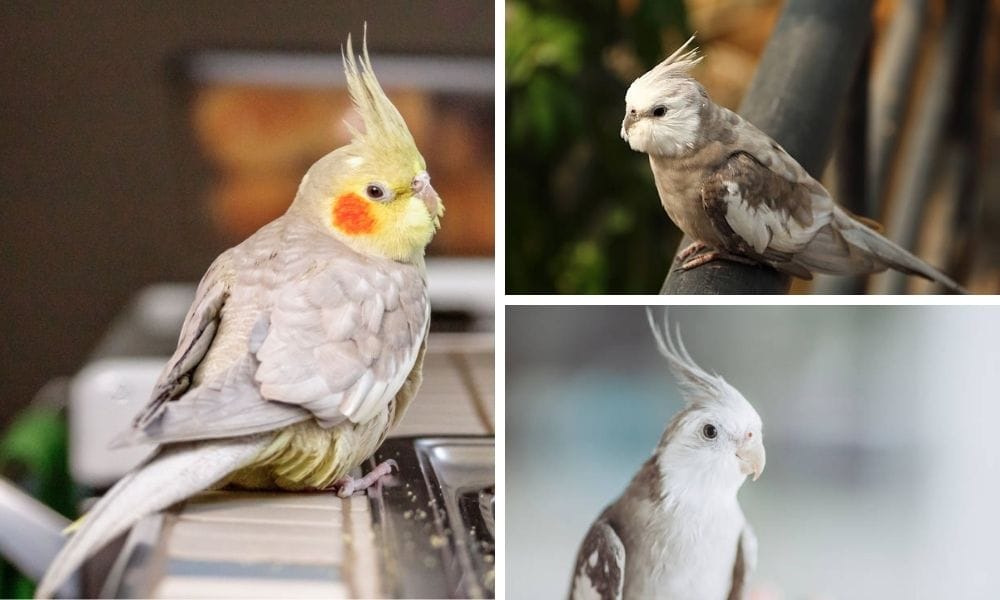
Cockatiels, a cherished member of the parrot family, have won the hearts of bird enthusiasts worldwide. Among the various color mutations, the cinnamon cockatiel and the white-faced cockatiel stand out for their unique coloring and charming personalities. In this comprehensive guide, we'll delve into the world of these two popular variants, exploring their key differences and similarities.
Key Takeaways:
- Understand the distinct visual characteristics between cinnamon cockatiels and white-faced cockatiels.
- Learn about the behavioral traits and care requirements that both types of cockatiels share.
- Discover the genetic factors that contribute to the color mutations of these beloved pet birds.
Visual Distinctions: Cinnamon vs White-Faced with Bright Yellow Face
Cinnamon cockatiels, part of the cockatoo family, boast a warm, chocolate brown coloring in their feathers due to a reduction in the grey pigment. This brown pigment is most noticeable in the wings and tail feathers, complemented by their bright orange cheek patches which set them apart from other mutations. Cheek patches play a crucial role in identifying different cockatiel mutations, with variations in their appearance based on genetic factors. The cinnamon coloring gives these birds a softer appearance compared to the standard grey cockatiel. On the other hand, white-faced cockatiels lack the yellow barring and orange cheek patch typically found in other mutations, presenting a striking contrast with their bright white faces and overall plumage.
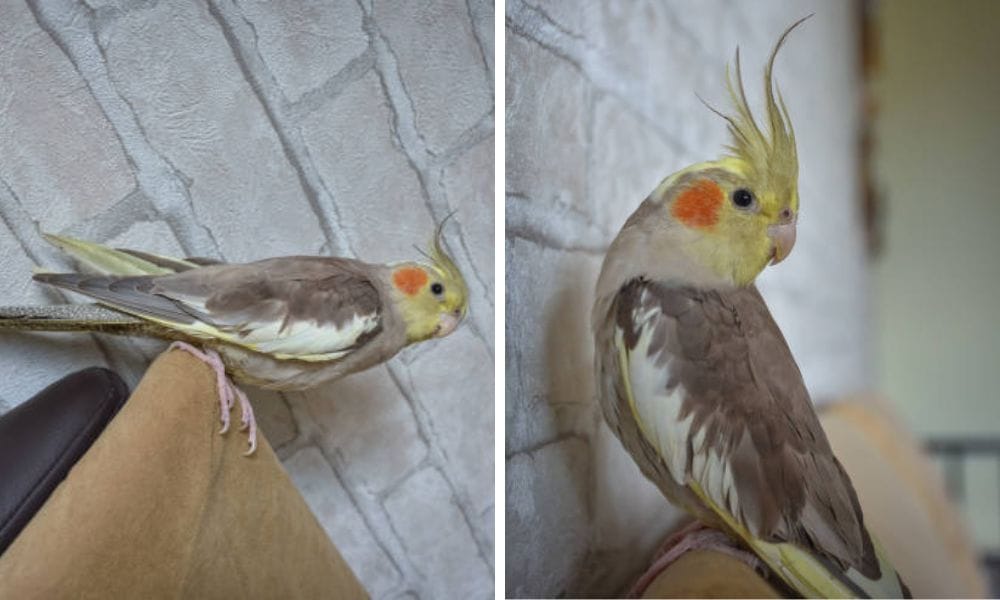
The Genetics Behind the Color Mutations
The cinnamon trait in cockatiels is a sex-linked recessive mutation, which means that the gene responsible for the cinnamon coloring is located on the sex chromosome. This makes sexing cockatiels with this mutation a bit easier. White-faced cockatiels, however, exhibit a dominant silver gene that eliminates all traces of yellow and orange, resulting in their pure white faces and pastel face variations. Cinnamon Cockatiel is a sex-linked recessive gene, this mutation is responsible for the brown phenotype throughout the plumage of Cockatiels, the reason for this is that this gene inhibits the final stage of melanin production resulting in birds not being able to produce shades of black and grey pigments rather leaving them shades of brown.
Behavior: Are They Different?
When it comes to cockatiel behavior, both cinnamon and white-faced varieties share similar traits. They are known to be social, affectionate, and can mimic sounds, making them good pets for families. The personality of a pet cockatiel is more influenced by individual temperament and upbringing rather than color mutation.
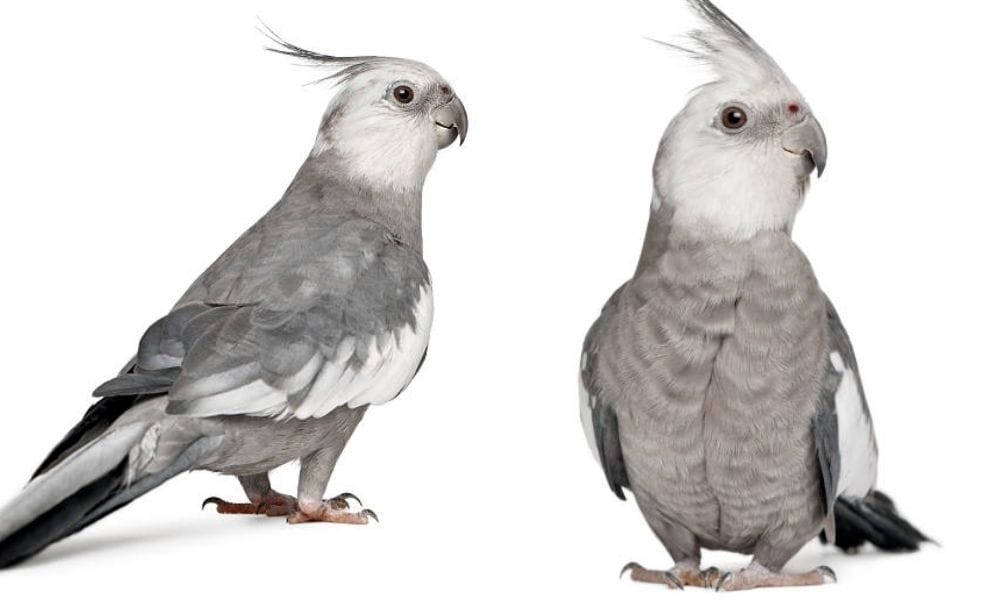
Caring for Your Feathered Friend
Regardless of their color, all cockatiels require a balanced diet, a spacious cage, and regular interaction with their owners. Fresh water should always be available as it is essential for their diet and overall well-being. They are hardy birds but thrive on attention and mental stimulation. Providing toys and opportunities for exercise is crucial for maintaining their health and happiness.
Popularity and Availability
Cinnamon cockatiels and white-faced cockatiels are among the most popular little birds found in pet stores and with bird breeders. Cinnamon cockatiels, in particular, make wonderful companions due to their friendly nature. Their unique coloring and friendly nature make them highly sought after. However, white-faced varieties are typically higher priced due to their striking appearance and the genetics involved in breeding them.
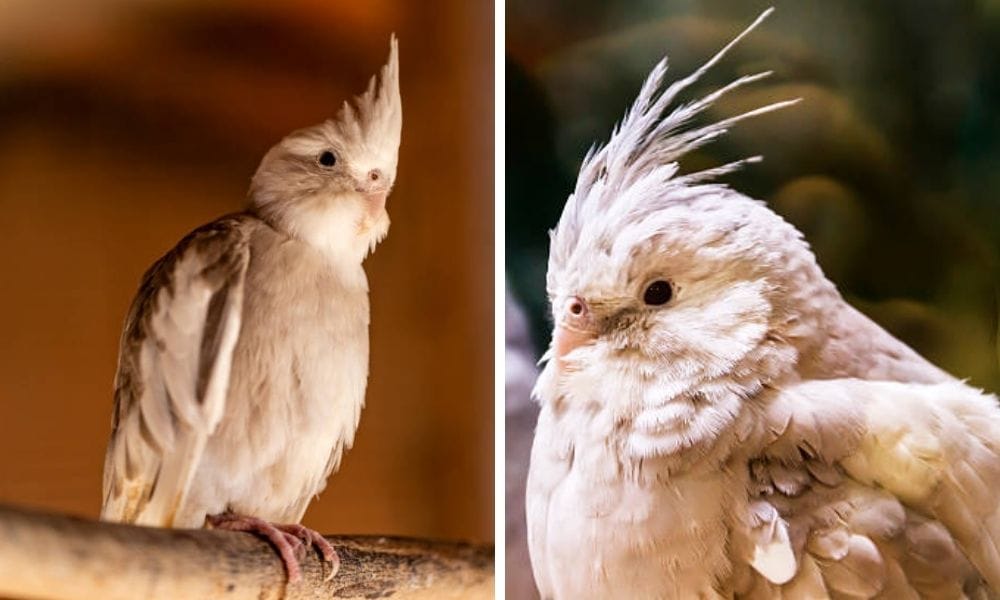
Lifespan and Health
Both cinnamon and white-faced cockatiels are known to be long-lived, with many reaching 15 to 20 years of age when properly cared for. They are generally robust, but like all birds, they can be susceptible to certain health issues. Regular veterinary check-ups are recommended to keep them in top shape.
The Molting Process
The first molt of a young bird can be an exciting time for cockatiel owners. It's during this period that the true colors and patterns of cinnamon pied cockatiels and white-faced varieties become more apparent. The molting process can also affect behavior, as it can be a stressful time for young birds.
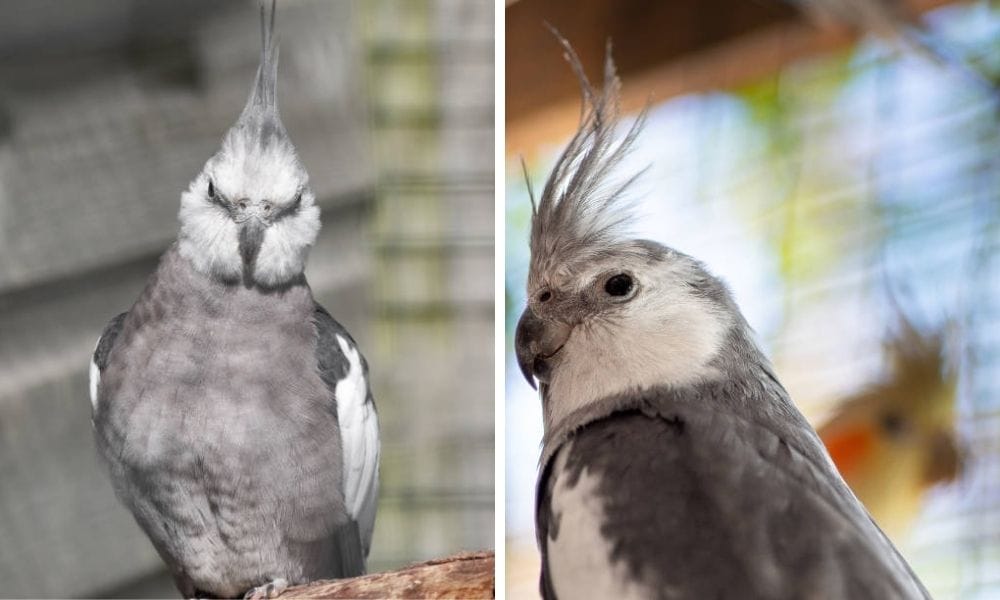
Cinnamon Pearl Cockatiel: A Unique Variation
Cinnamon pearl cockatiels are a stunning variation that bird enthusiasts adore. Male cinnamon pearls will molt and appear as 'normal cinnamon'. With their pale yellow feathers delicately sprinkled with cinnamon shades, they present a softer color palette compared to the more common grey cockatiels. This coloration is particularly prominent in females, as the pearl patterning tends to fade in males as they mature. The cinnamon pearl cockatiel is a result of a sex-linked recessive mutation, which means that breeding for this specific variety requires a bit of genetic knowledge. Proud mom cockatiels of this variety often pass the gene to their offspring, resulting in a beautiful clutch of baby birds that carry the unique pearl essence.
When observing pictures of cinnamon pearl cockatiels, one can’t help but notice the intricate patterns that adorn their feathers. These patterns are more than just visually appealing; they are a testament to the complexity of avian genetics. Bird stores that specialize in pet birds may often showcase these lovely creatures, and they can provide potential owners with valuable information on how to care for them. It’s important to note that the cinnamon pearl’s distinct markings may vary significantly from bird to bird, making each one a unique work of art in its own right.
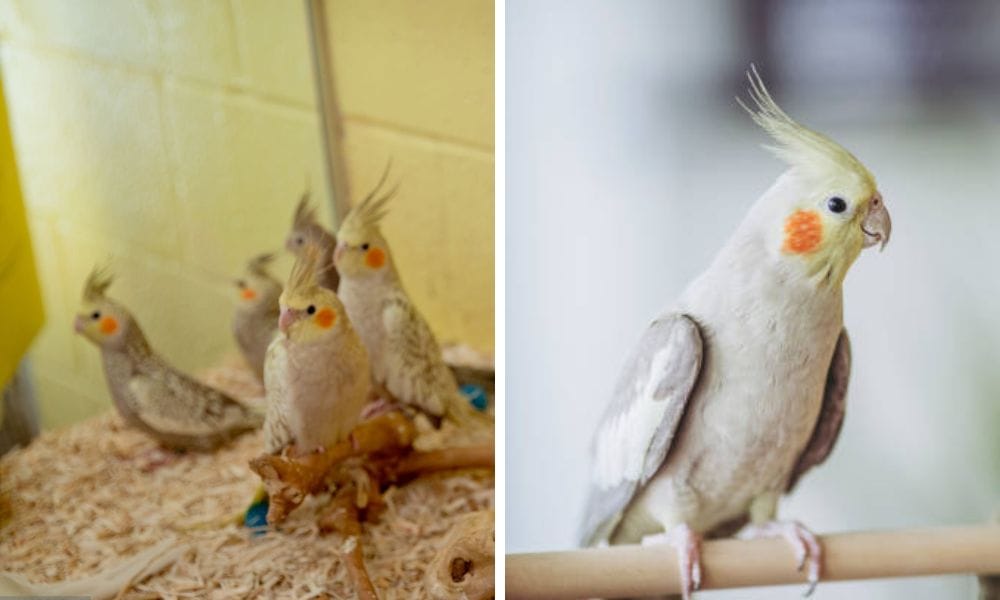
Vocalizations and Communication: Understanding Cockatiel Chatter and Mimicking Sounds
Cockatiels are known for their vocal prowess, often using chirps and whistles to communicate with their owners and fellow birds. Description cockatiels often include their ability to mimic sounds, which is a delightful trait for many pet owners. These parrots may not have the extensive vocabulary of larger parrots, but they compensate with charming whistles and the occasional word. Their vocalizations can vary from soft chirps when they are content to loud calls when they seek attention or alert their flock to potential danger. Understanding these vocal cues is essential for owners to gauge their pet's well-being and mood.
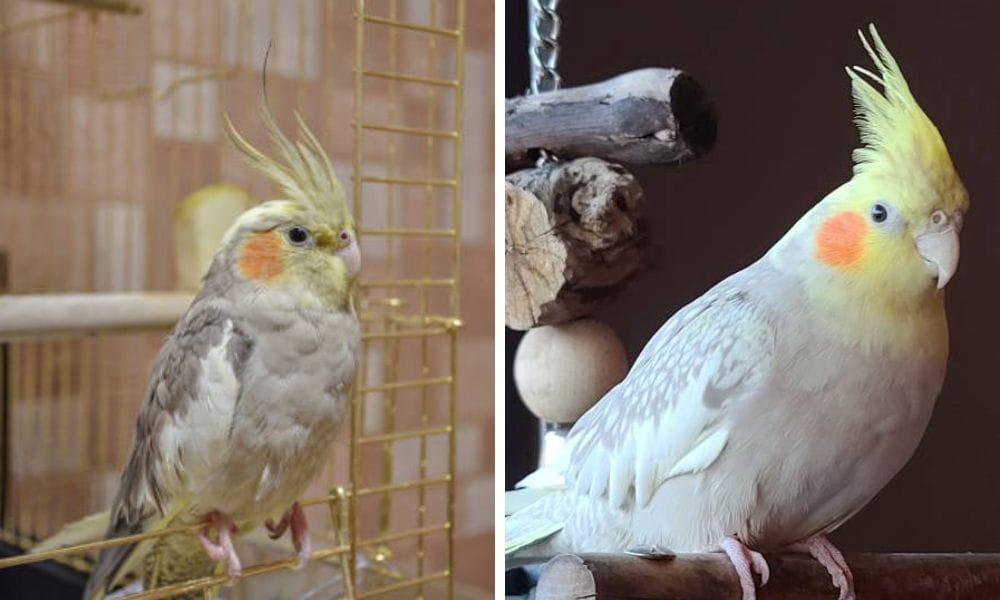
The Intricacies of Sexing Cockatiels
When it comes to sexing cockatiels, the task can be quite challenging, especially in young birds or those with mutations that obscure visual sexing cues. Typically, male cockatiels boast a more vibrant coloration and are more vocal, while females often have bars on the underside of their tail feathers. However, this isn't a foolproof method, as some mutations, like the sex-linked recessive mutation found in cinnamon cockatiels, can make these differences less apparent. DNA testing or observing behavior during the breeding season can provide more definitive answers, as males will exhibit mating dances and calls.
In the world of breeding cockatiels, understanding the sex of your birds is crucial. Not only does it prevent unwanted breeding, but it also allows breeders to plan pairings strategically to produce desired color mutations. For instance, the sex-linked recessive mutation that results in the cinnamon coloration requires specific genetic combinations to be passed on. Breeders must know the sex of their cockatiels to predict the outcome of their breeding efforts accurately. This knowledge is essential for maintaining genetic diversity and health within the cockatiel population.
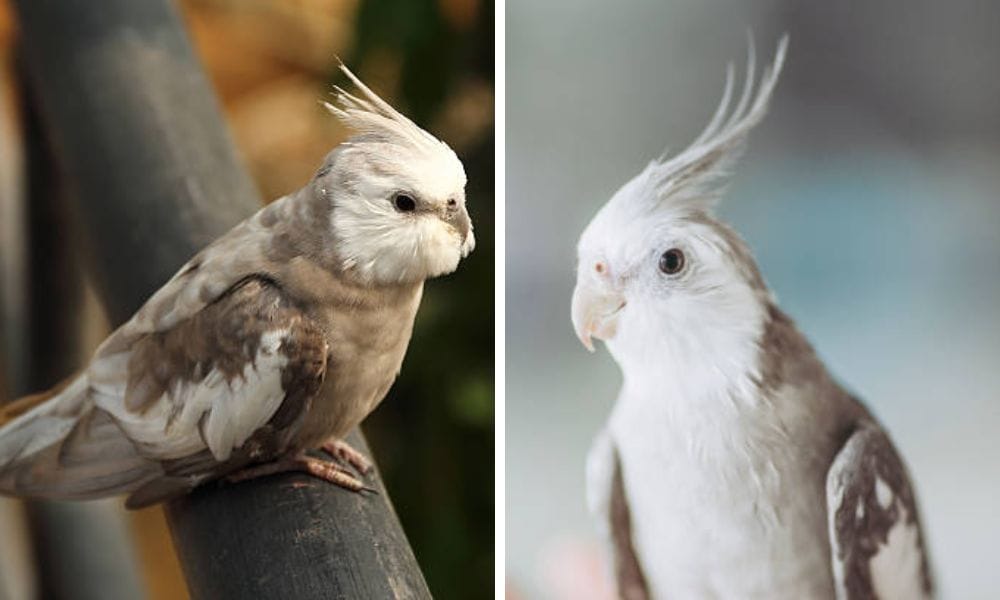
Breeding Cockatiels: A Delicate Art
Breeding cockatiels is a delicate art that requires a deep understanding of genetics, behavior, and environmental factors. Successful breeders pay close attention to the lineage of their birds to avoid inbreeding and to perpetuate desirable traits. For example, breeding a cinnamon cockatiel with a white-faced cockatiel can result in a variety of color patterns, but breeders must be aware of the sex-linked recessive mutation that can influence the coloration of the offspring. This mutation is carried on the X chromosome, and its expression can vary depending on the sex of the bird
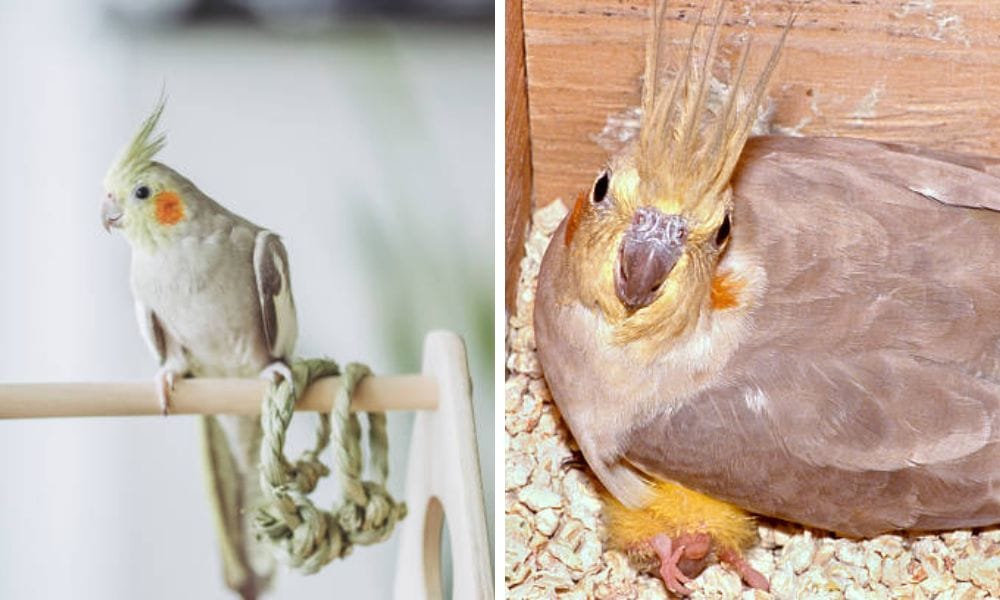
The Role of Genetics in Cockatiel Color Variations
The stunning variety of cockatiel colorations is a result of both natural mutations and selective breeding. One such example is the sex-linked recessive mutation, which is responsible for the lutino cockatiel's striking yellow and white feathers. This mutation affects the bird's ability to produce melanin, resulting in the absence of the typical grey coloration found in wild cockatiels. Breeders often seek out these mutations to produce birds with unique and desirable traits, which has led to a wide range of color variations within the species.
Understanding the genetics behind these mutations is crucial for breeders who aim to produce specific color patterns in their offspring. For instance, when breeding cockatiels, knowing that the lutino mutation is sex-linked helps breeders predict the likelihood of producing lutino chicks. This knowledge also aids in maintaining genetic diversity and preventing health issues associated with inbreeding. As breeders continue to explore the genetic possibilities, the array of cockatiel colors will likely expand, offering even more choices for enthusiasts of these charming parrots.
Isabelle Cockatiel: Discovering the Pale Beauty
The isabelle cockatiel, also known as the cinnamon pied cockatiel, is a captivating variety that boasts a combination of the cinnamon mutation with the pied pattern. Some cockatiel mutations, like the isabelle cockatiel, can have red eyes. This results in a bird with a bright yellow face and a white body dappled with patches of pale yellow and cinnamon. The pied pattern is random and can lead to a wide range of appearances, from birds with just a few cinnamon spots to those almost entirely covered in the warm hue. The isabelle cockatiel is a favorite among pet bird owners for its gentle appearance and the pleasant contrast it offers to the more common colorations.
For those looking to add an isabelle cockatiel to their family, the best bet is to visit reputable bird stores or breeders like Barbara Rost, known for her expertise in breeding various cockatiel mutations. When bringing home an isabelle cockatiel, it’s essential to consider whether you’d prefer to have their wings clipped for safety. While some owners choose to do so to prevent escape or injury, others opt to allow their pet birds the freedom to fly within a safe environment. Regardless of the choice, ensuring that your isabelle cockatiel has a comfortable and enriching habitat is key to a long and happy companionship.
Breeding Considerations
For those interested in breeding, understanding the genetic differences between cinnamon pearl cockatiels and white-faced cockatiels is essential. Breeding for specific traits requires knowledge of how color mutations are inherited and how they can be combined to produce desired offspring.
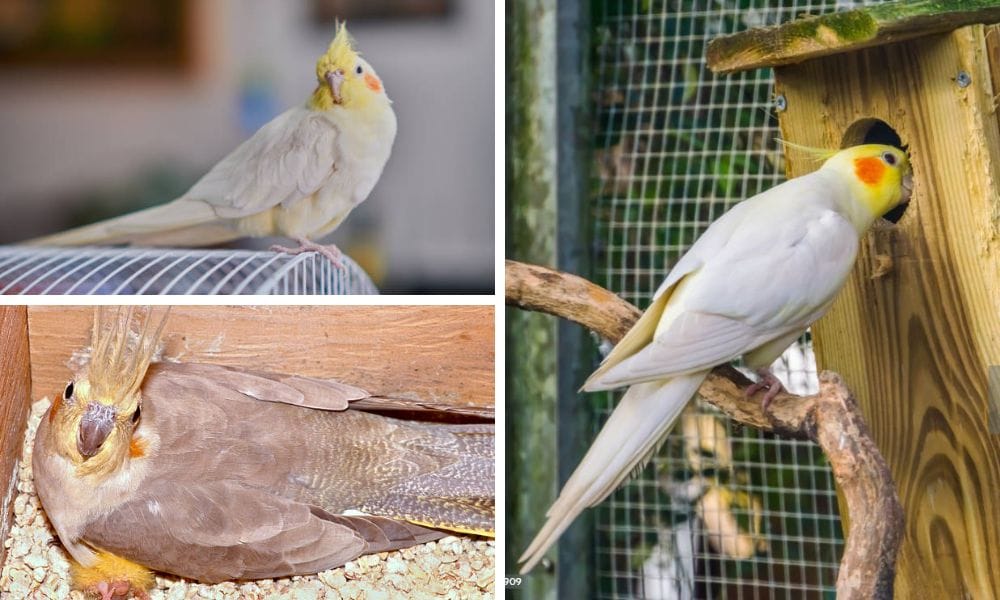
Sexing Your Cockatiel
Sexing cockatiels can be challenging, but certain color mutations, like the cinnamon trait, can offer clues. Males typically have brighter and more distinct markings, while females may have duller hues and less defined patterns. However, genetic testing or observing behavior during breeding season can provide more definitive answers.
The Importance of Socialization
Cockatiels are social creatures that thrive on interaction with both humans and other birds. Both cinnamon and white-faced cockatiels benefit from being handled regularly and being part of family activities. Socialization from a young age helps prevent behavioral issues and fosters a strong bond between the bird and its owner.
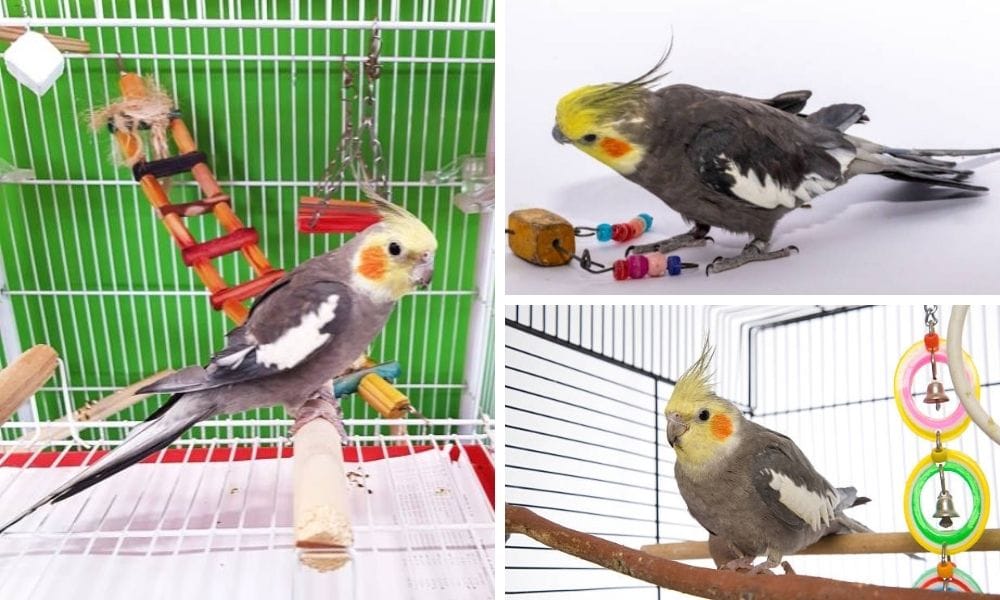
Training Your Cockatiel
Training is an important aspect of cockatiel ownership. Both cinnamon and white-faced cockatiels are intelligent and capable of learning tricks and commands. Positive reinforcement and patience are key to successful training sessions.
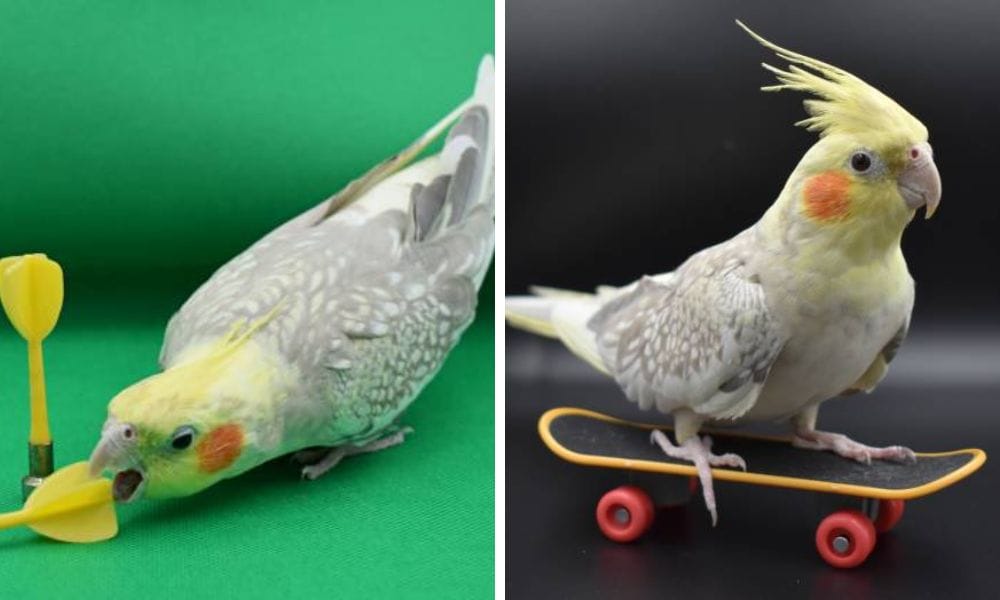
The Right Diet for Optimal Health
A proper diet is crucial for maintaining the health of any cockatiel. A mix of seeds, pellets, fresh fruits, and vegetables should be provided to ensure a balanced nutritional intake. Both cinnamon and white-faced cockatiels will benefit from a diet rich in vitamins and minerals.
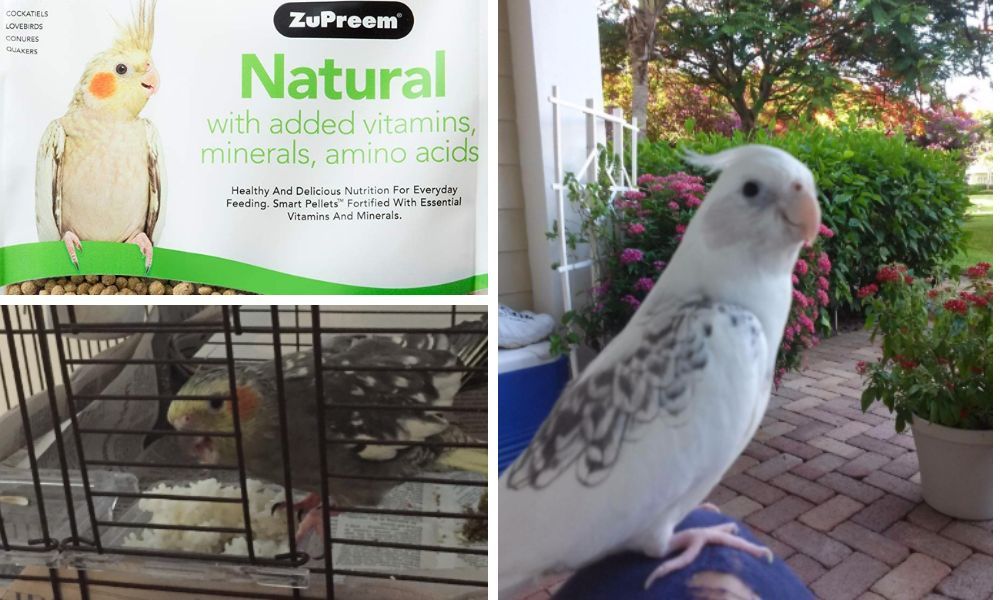
Housing Your Cockatiel
The cage is your cockatiel's home, and it should be spacious enough to allow for flight and exercise. Both cinnamon and white-faced cockatiels need room to spread their wings and explore. Perches, toys, and a clean environment are also important for their well-being.
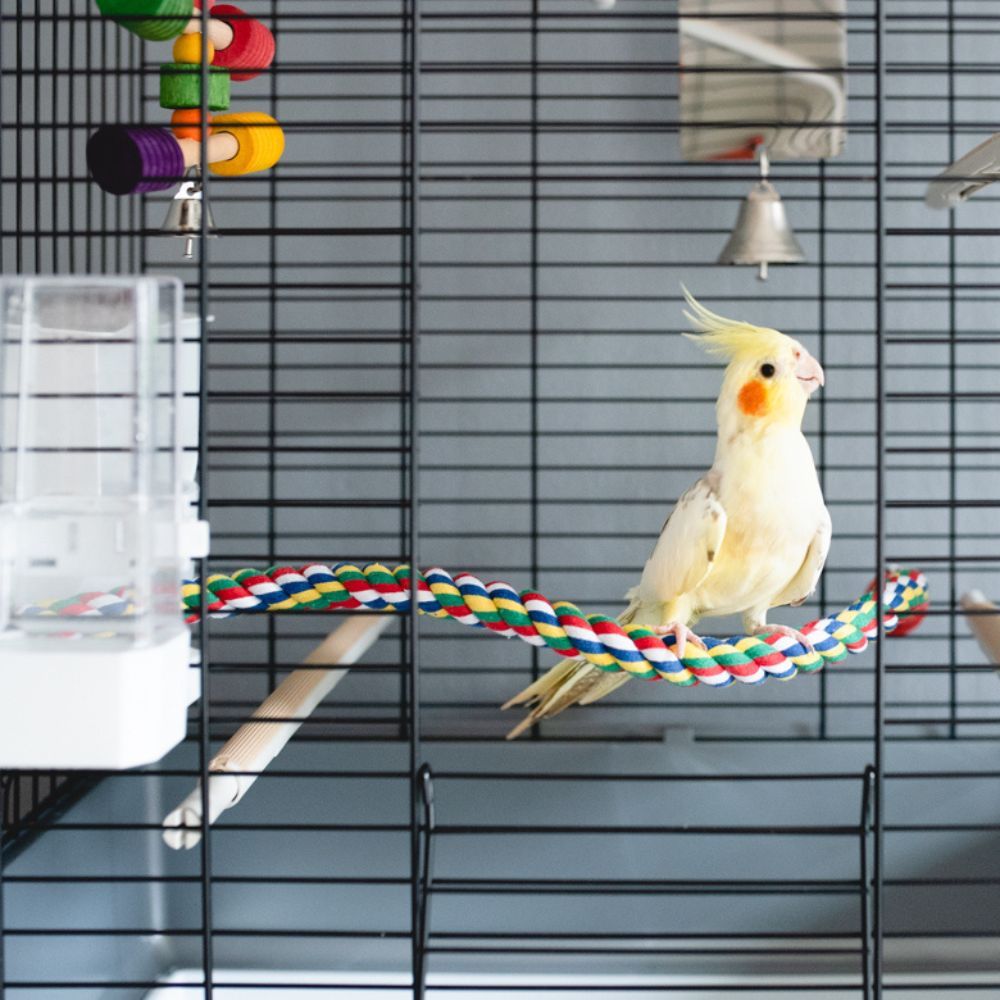
Understanding Molting and Feather Care
Molting is a natural process for cockatiels, during which they shed old feathers and grow new ones. Both cinnamon and white-faced cockatiels require extra care during this time, including a diet high in protein and regular misting to help with feather growth.
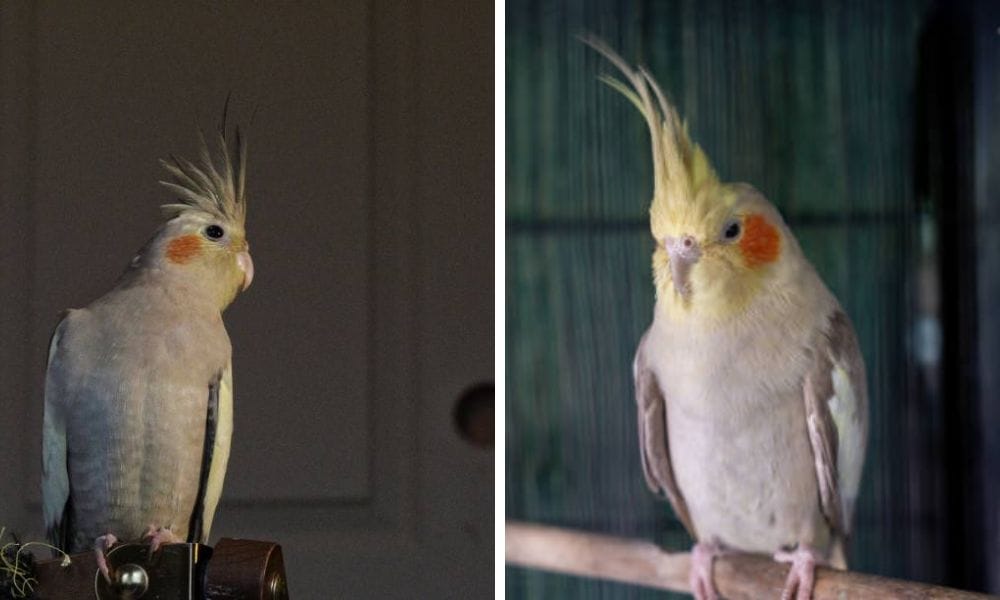
The Joy of Cockatiel Companionship: Wonderful Companions
Owning a cockatiel, whether cinnamon or white-faced, is a rewarding experience. These birds are known for their affectionate nature and can form strong bonds with their owners. They are not just pets but become part of the family.
Summary
Cinnamon cockatiels and white-faced cockatiels are two captivating variants within the cockatiel species. While they differ in their unique coloring and genetic makeup, they share many similarities in behavior, care needs, and the joy they bring to their owners. Both are social, affectionate, and excel at mimicking sounds, including household noises like phones and alarms, making them excellent companions. They require a balanced diet, a spacious cage, and regular interaction to thrive. Understanding the nuances of each variant can help potential cockatiel owners make an informed decision when choosing their feathered friend.
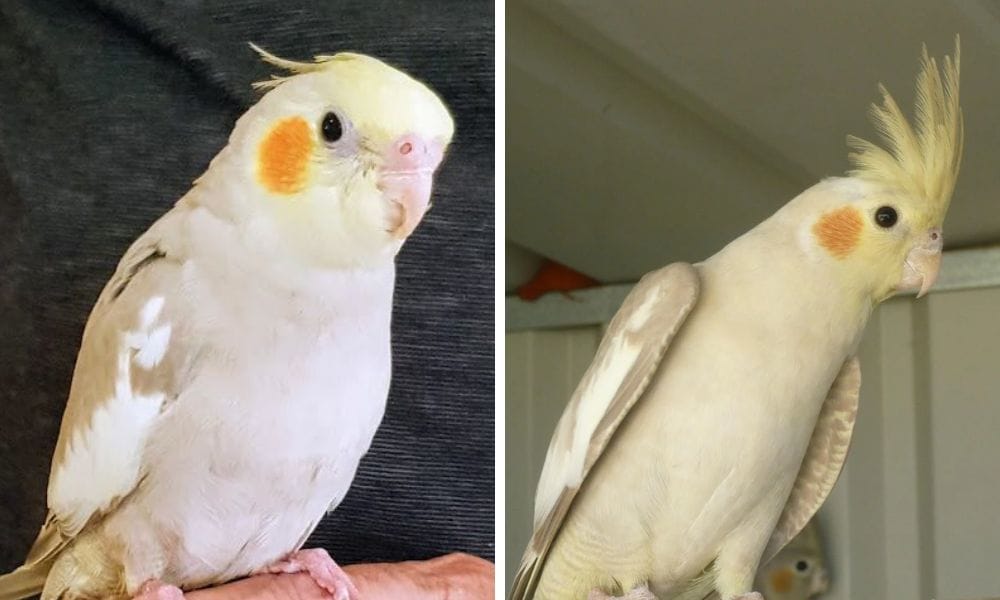
FAQ Section
Q: What is the main visual difference between cinnamon cockatiels and white-faced cockatiels? A: The main visual difference is that cinnamon cockatiels have a warm, chocolate brown coloring in their feathers, especially noticeable in their wings and tail, while white-faced cockatiels have a bright white face and lack the yellow and orange pigments typically found in other cockatiel mutations.
Q: Can you tell the sex of a cinnamon cockatiel by its color? A: Yes, to some extent. The cinnamon trait is a sex-linked recessive mutation, which often makes it easier to distinguish males from females based on their coloring and pattern intensity. Males generally have brighter and more distinct markings after their first molt.
Q: Are white-faced cockatiels more expensive than cinnamon cockatiels? A: Generally, white-faced cockatiels are typically higher priced than cinnamon cockatiels. This is due to their striking appearance and the genetic factors involved in breeding this particular mutation. However, prices can vary depending on availability and the breeder.

